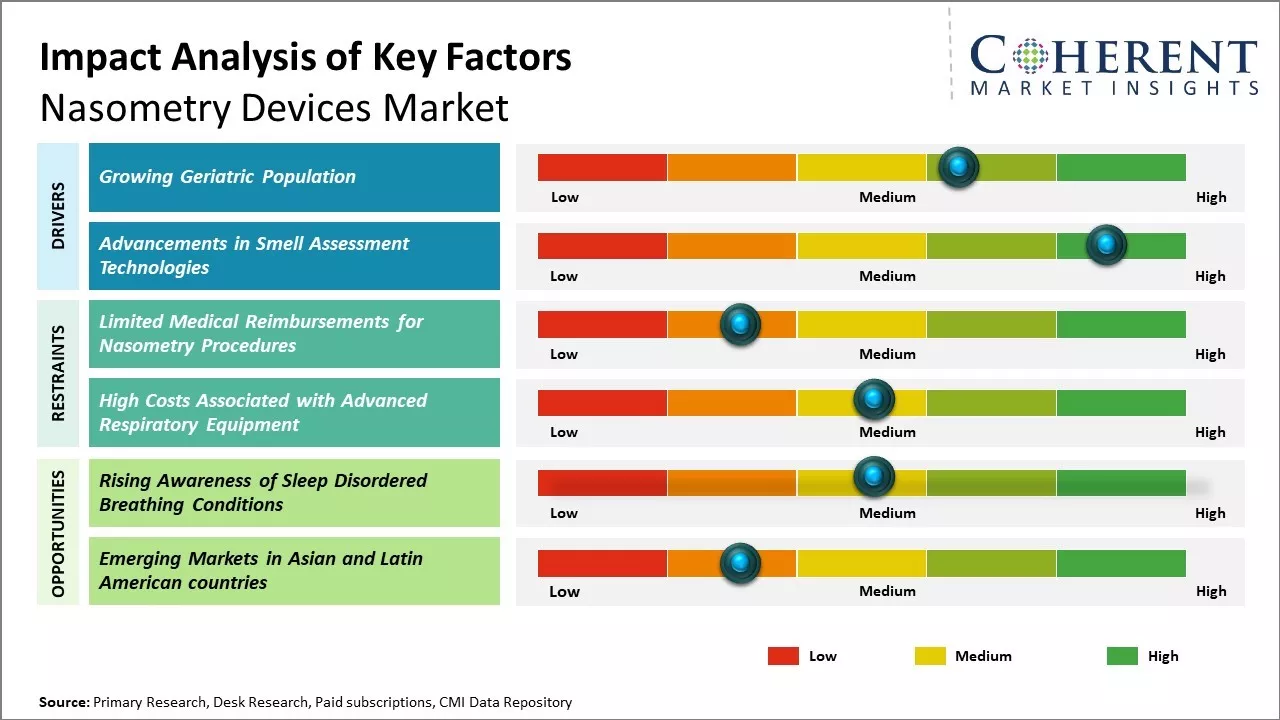The nasometry devices market is estimated to be valued at USD 262.2 Mn in 2025 and is expected to reach USD 357.1 Mn by 2032, exhibiting a compound annual growth rate (CAGR) of 4.5% from 2025 to 2032.

To learn more about this report, Request sample copy
The global nasometry devices market is expected to witness significant growth during the forecast period. This is attributed to the rising prevalence of nasal diseases such as nasal deformities, chronic rhinosinusitis (CRS), and nasal obstruction. Nasometry devices help in the accurate assessment and evaluation of nasal airway which further helps physicians in determining appropriate surgical procedures and treatment. Technological advancements in these devices, increasing awareness regarding nasal diseases, and growing adoption of minimally invasive Ear, Nose and Throat (ENT) procedures are further expected to propel the market growth. However, high costs of these devices and inadequate reimbursement policies may hinder the market growth to some extent during the analysis period.
Growing Geriatric Population
As life expectancy continues to increase globally, the aged population is growing at an accelerated pace. Older individuals are more prone to develop nasal issues, such as nasal obstruction, hyposmia, chronic sinusitis, allergic rhinitis, and polyps, due to a weaker immune system and other age-related health changes. This has substantially boosted the clinical significance of olfaction assessment in elderly care. Nasometry devices enable the objective and standardized evaluation of sense of smell in older adults, which is crucial in the early diagnosis of neurodegenerative disorders such as Parkinson's and Alzheimer's disease. Furthermore, loss of sense of smell can negatively impact nutritional habits and quality of life. Therefore, growing geriatric demographic demanding smell assessment solutions is primed to drive the nasometry devices market.
Joining thousands of companies around the world committed to making the Excellent Business Solutions.
View All Our Clients